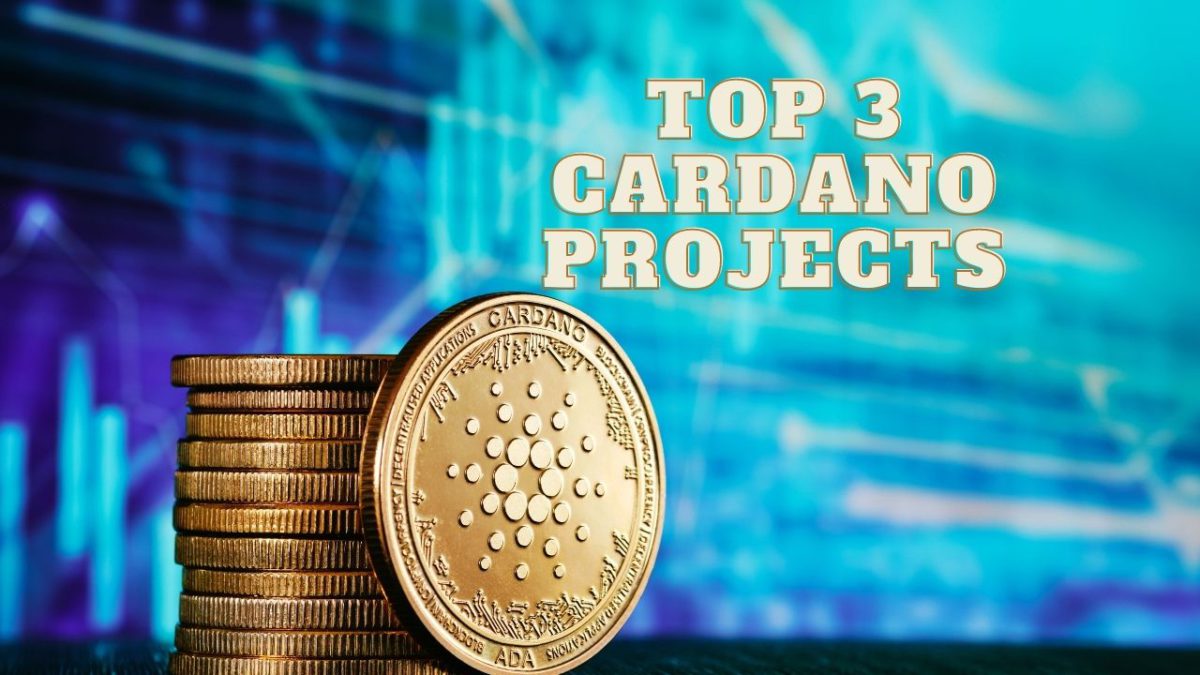Bridge Security In DeFi: Top 10 Reasons Why It Is Important
Decentralized Finance (DeFi) represents a revolutionary movement within the financial industry, leveraging blockchain technology to create an open, permissionless, and trustless ecosystem for financial services. In essence, DeFi seeks to democratize access to financial products and services by eliminating intermediaries and providing direct peer-to-peer interactions on decentralized platforms.
At its core, DeFi encompasses a wide range of decentralized applications (DApps) and protocols that facilitate various financial activities, including lending, borrowing, trading, investing, and asset management. These protocols operate on blockchain networks, primarily Ethereum, utilizing smart contracts to automate and execute financial transactions without the need for traditional financial institutions.
One of the fundamental pillars of DeFi is decentralized lending and borrowing. Through platforms like Compound, Aave, and MakerDAO, users can lend out their digital assets and earn interest or borrow assets by collateralizing their holdings, all without requiring permission or intermediaries. This enables greater liquidity in the market and provides individuals with access to credit and capital without the need for a bank or credit check.
DeFi also encompasses decentralized exchanges (DEXs) like Uniswap, SushiSwap, and PancakeSwap, which enable users to trade digital assets directly with one another without relying on a centralized exchange. These DEXs utilize automated market-making algorithms and liquidity pools to facilitate trading, offering users greater control over their assets and reducing the risk of censorship or manipulation.
Furthermore, DeFi platforms offer innovative solutions for asset management and investment. Yield farming protocols like Yearn Finance and Harvest Finance allow users to optimize their returns by automatically allocating funds to the most lucrative opportunities across various DeFi protocols. Meanwhile, synthetic asset platforms like Synthetix enable the creation and trading of synthetic assets that track the value of real-world assets such as stocks, commodities, and fiat currencies.
Overall, DeFi represents a paradigm shift in the financial industry, empowering individuals with unprecedented access to financial services, liquidity, and investment opportunities. As the DeFi ecosystem continues to grow and evolve, it has the potential to disrupt traditional finance and democratize access to financial resources on a global scale.
Also, read- Exploring Alternatives To Blockchain For Decentralized Finance (DeFi)
Bridge Security in DeFi
Bridge security in DeFi refers to the measures taken to ensure the safety and integrity of assets transferred between different blockchain networks or protocols. Bridges serve as connectors that enable the seamless movement of assets, such as tokens or cryptocurrencies, across disparate blockchain ecosystems. However, given the decentralized and trustless nature of DeFi, ensuring the security of these bridges is paramount to prevent potential vulnerabilities and attacks.
One of the primary concerns with bridge security in DeFi is the risk of exploits or hacks that could result in the loss or theft of assets transferred between blockchains. Vulnerabilities in smart contracts, protocol implementations, or oracle systems could be exploited by malicious actors to manipulate transactions or steal funds. Therefore, developers and auditors must conduct thorough security assessments and audits to identify and mitigate potential risks before deploying bridge protocols.
Another critical aspect of bridge security is the decentralization of control and governance. Centralized bridges controlled by a single entity or consortium pose inherent risks, as they are susceptible to censorship, manipulation, or single points of failure. Decentralized bridges, on the other hand, distribute control among multiple validators or nodes, reducing the risk of collusion or malicious behavior. Implementing robust governance mechanisms, such as multi-signature wallets or decentralized autonomous organizations (DAOs), can further enhance the security and resilience of decentralized bridges.
Interoperability standards and protocols play a crucial role in bridge security, ensuring seamless and secure communication between different blockchain networks. Standards such as the Inter-Blockchain Communication (IBC) protocol or Ethereum’s TokenBridge provide guidelines and frameworks for building secure bridges that adhere to industry best practices and standards.
bridge security is a critical consideration in DeFi, as it directly impacts the safety and reliability of asset transfers between blockchain networks. By implementing robust security measures, decentralization, and interoperability standards, developers can mitigate risks and ensure the trustworthiness and integrity of decentralized bridges in the ever-evolving DeFi ecosystem.
Importance of bridge security in DeFi
Bridge security is paramount in decentralized finance (DeFi) for several crucial reasons:
- Asset Protection: Bridge security ensures the safety of assets transferred between different blockchain networks, preventing unauthorized access, theft, or manipulation.
- Trust and Reliability: Secure bridges instill trust and confidence among users, promoting adoption and participation in DeFi protocols and platforms.
- Prevention of Exploits: Robust bridge security measures mitigate the risk of exploits or hacks that could result in the loss or theft of funds, safeguarding the integrity of DeFi ecosystems.
- Decentralization: Secure bridges uphold the principles of decentralization by distributing control and governance among multiple validators or nodes, reducing the risk of single points of failure or manipulation.
- Resilience to Attacks: Secure bridges enhance the resilience of DeFi networks against attacks such as censorship, collusion, or manipulation, ensuring the continued operation and integrity of decentralized systems.
- Compliance and Regulation: Compliance with regulatory requirements is facilitated by implementing secure bridges that adhere to industry best practices and standards, mitigating legal and financial risks for DeFi platforms and users.
- Interoperability: Secure bridges enable seamless interoperability between different blockchain networks, allowing for the efficient movement of assets and data across disparate ecosystems.
- Innovation and Growth: Bridge security fosters innovation and growth in the DeFi space by enabling the development of new protocols, applications, and use cases that leverage cross-chain functionality securely.
- User Confidence: Secure bridges bolster user confidence by providing assurance that their assets are protected and transactions are executed safely and reliably, encouraging greater participation and engagement in DeFi activities.
- Long-Term Sustainability: Ensuring the security of bridges is essential for the long-term sustainability of DeFi ecosystems, as it protects the interests of users, investors, and stakeholders, fostering continued growth and innovation in the decentralized finance space.
Over $2 billion have been exploited in bridge hacks so far
— slappjakke.eth 🦇🔊 (@Slappjakke) February 22, 2023
Altitude DeFi @AltitudeDeFi $ALTD lets you bridge blue-chip altcoins using @LayerZero_Labs tech for omnichain composability and security
👇🧵 pic.twitter.com/049wVkvdZg
5 Examples of Bridge Security in DeFi
Examples of bridge security measures in decentralized finance (DeFi) include:
- Multi-Signature Wallets: Implementing multi-signature wallets for controlling bridge transactions enhances security by requiring multiple signatures from authorized parties to approve asset transfers between different blockchain networks. This reduces the risk of unauthorized or malicious transactions.
- Audits and Code Reviews: Conducting thorough security audits and code reviews of bridge protocols by reputable third-party firms helps identify and mitigate potential vulnerabilities or weaknesses in the codebase. Audits ensure that bridge implementations adhere to best practices and industry standards, enhancing overall security.
- Decentralized Governance: Establishing decentralized governance mechanisms, such as decentralized autonomous organizations (DAOs), for managing bridge operations and protocol upgrades ensures that control and decision-making are distributed among a diverse group of stakeholders. This reduces the risk of centralization and enhances the resilience of bridges to attacks or manipulation.
- Interoperability Standards: Adhering to interoperability standards and protocols, such as the Inter-Blockchain Communication (IBC) protocol or Ethereum’s TokenBridge, ensures secure communication and asset transfers between different blockchain networks. Interoperability standards provide guidelines and frameworks for building bridges that facilitate seamless and secure interoperability.
- Continuous Monitoring and Incident Response: Implementing robust monitoring and incident response mechanisms for detecting and responding to security incidents or anomalies in real-time helps mitigate risks and ensure the timely resolution of security threats. Continuous monitoring of bridge activity, combined with proactive incident response procedures, enhances the overall security posture of DeFi ecosystems.
The Road Ahead: Building Secure Bridges for the Future of DeFi – A Deep Exploration
Decentralized Finance (DeFi) has emerged as a revolutionary force, enabling a new era of peer-to-peer financial services without centralized intermediaries. However, its potential is heavily reliant on the secure movement of assets across different blockchains. This crucial function is facilitated by blockchain bridges, which act as gateways for transferring assets and data between disparate systems. Unfortunately, bridges have become a weak point in the DeFi ecosystem, susceptible to costly and disruptive attacks. As we navigate towards a future powered by DeFi, building secure bridges is paramount.
Challenges and Considerations: A Multifaceted Landscape
- The Evolving Threat Landscape: Attackers are constantly innovating their tactics, exploiting vulnerabilities in bridge protocols and infrastructure. From targeting smart contract bugs to manipulating oracles and orchestrating social engineering scams, the attack landscape demands a multifaceted approach to security.
- Balancing Decentralization and Security: A core tenet of DeFi is decentralization. However, achieving robust security in a decentralized environment presents unique challenges. Striking a balance between these two principles is crucial for building bridges that are both secure and user-friendly.
- The Regulatory Labyrinth: As DeFi continues to evolve, regulatory frameworks are likely to emerge. Navigating these regulations while prioritizing security and innovation will be a significant challenge for bridge developers and the wider DeFi community.
Building Bridges of Steel: Implementing Robust Security Measures
- Security Audits by Renowned Firms: Regular, in-depth audits conducted by reputable security firms with expertise in blockchain technology are essential for identifying and patching vulnerabilities in bridge smart contracts before they’re exploited.
- Bug Bounty Programs: Offering financial incentives to security researchers through bug bounty programs can attract a wider pool of talent to identify and report vulnerabilities proactively. This fosters a collaborative effort towards a more secure ecosystem.
- Formal Verification: Formal verification techniques, which involve rigorous mathematical proofs to verify the correctness of smart contracts, can significantly reduce the risk of exploitable vulnerabilities. While computationally expensive, they can be particularly beneficial for critical bridge infrastructure.
- Decentralized Oracles: Moving away from centralized oracles and leveraging decentralized oracle networks can enhance security by eliminating a single point of failure. Decentralized oracles gather data from multiple sources, making manipulation by attackers more difficult.
- Multi-Signature Wallets and Decentralized Governance: Implementing multi-signature wallets for bridge custodians can significantly reduce the risk of unauthorized access to bridge funds. Additionally, employing decentralized governance models allows for community oversight and decision-making, further mitigating the risk of centralized control.
Fostering a Collaborative Ecosystem: United We Stand
- Cross-Chain Collaboration: Effective communication and collaboration between blockchain developers, security experts, and the broader DeFi community are crucial for building secure bridges. Sharing knowledge, best practices, and threat intelligence can lead to a more robust defense against attacks.
- Standardization Efforts: Standardization initiatives around bridge communication protocols and security practices can create a more unified and secure DeFi landscape. This would promote interoperability while ensuring a baseline level of security across different bridge implementations.
- Education and Awareness: Educating DeFi users on safe bridge usage practices, including secure storage of private keys and healthy skepticism towards social engineering tactics, is vital for building a more resilient ecosystem.
Bridging the Gap: Innovation and the Road Ahead
- Next-Generation Bridge Design: Continuous exploration and development of novel bridge architectures that prioritize security are essential. This might involve exploring alternative consensus mechanisms, utilizing hardware security modules, or integrating zero-knowledge proofs for enhanced privacy and security.
- Layer 2 Scaling Solutions: The scalability limitations of base layer blockchains can contribute to bridge congestion and potential security risks. Scaling solutions like Layer 2 protocols can alleviate these limitations and potentially enhance bridge security.
- Insurance and Risk Management: The emergence of DeFi insurance products can provide a safety net for users in the event of bridge attacks. Additionally, exploring risk management strategies can help bridge operators mitigate potential vulnerabilities.
Building secure bridges is a complex and ongoing challenge. By acknowledging the multifaceted nature of the security landscape, implementing robust security measures, fostering an environment of collaboration, and continuously exploring innovative solutions, the DeFi community can pave the way for a secure and prosperous future. As DeFi matures, secure bridges will be the linchpins that connect different blockchains, unlock the full potential of this revolutionary technology, and empower a new era of decentralized finance.
Conclusion
In conclusion, bridge security is a critical aspect of decentralized finance (DeFi) that ensures the safe and reliable transfer of assets between different blockchain networks. By implementing robust security measures such as multi-signature wallets, audits and code reviews, decentralized governance, interoperability standards, and continuous monitoring and incident response,
DeFi platforms can mitigate risks and safeguard against unauthorized access, theft, or manipulation of assets. Secure bridges instill trust and confidence among users, promoting adoption and participation in DeFi ecosystems while upholding the principles of decentralization, resilience, and innovation. As the DeFi space continues to evolve and grow, prioritizing bridge security remains essential for the long-term sustainability and success of decentralized finance, enabling the continued growth and development of innovative financial products and services that empower individuals and drive financial inclusion on a global scale.
Stay informed with daily updates from Blockchain Magazine on Google News. Click here to follow us and mark as favorite: [Blockchain Magazine on Google News].
Get Blockchain Insights In Inbox
Stay ahead of the curve with expert analysis and market updates.
latest from tech
Disclaimer: Any post shared by a third-party agency are sponsored and Blockchain Magazine has no views on any such posts. The views and opinions expressed in this post are those of the clients and do not necessarily reflect the official policy or position of Blockchain Magazine. The information provided in this post is for informational purposes only and should not be considered as financial, investment, or professional advice. Blockchain Magazine does not endorse or promote any specific products, services, or companies mentioned in this posts. Readers are encouraged to conduct their own research and consult with a qualified professional before making any financial decisions. The featured image used is just a creative depiction of the title and it does not intend to hurt sentiments of any person or institution. If it hurts anyone sentiments, please do not hesitate to reach out to Blockchain Magazine.

 Bitcoin
Bitcoin  Ethereum
Ethereum  XRP
XRP  Tether
Tether  Solana
Solana  Dogecoin
Dogecoin  USDC
USDC  Cardano
Cardano  Lido Staked Ether
Lido Staked Ether  TRON
TRON  Chainlink
Chainlink  Avalanche
Avalanche  Sui
Sui  Wrapped stETH
Wrapped stETH  Wrapped Bitcoin
Wrapped Bitcoin  Toncoin
Toncoin  Stellar
Stellar  Hedera
Hedera  Shiba Inu
Shiba Inu  Polkadot
Polkadot  WETH
WETH  LEO Token
LEO Token  Litecoin
Litecoin  Bitcoin Cash
Bitcoin Cash  Hyperliquid
Hyperliquid  Bitget Token
Bitget Token  Uniswap
Uniswap  Official Trump
Official Trump  USDS
USDS  Wrapped eETH
Wrapped eETH  Pepe
Pepe  NEAR Protocol
NEAR Protocol  Ethena USDe
Ethena USDe  Aave
Aave  Aptos
Aptos  Internet Computer
Internet Computer  Ondo
Ondo  WhiteBIT Coin
WhiteBIT Coin  Ethereum Classic
Ethereum Classic  Monero
Monero  Mantle
Mantle  Cronos
Cronos  POL (ex-MATIC)
POL (ex-MATIC)  Render
Render  Dai
Dai  Algorand
Algorand  OKB
OKB  Artificial Superintelligence Alliance
Artificial Superintelligence Alliance 




